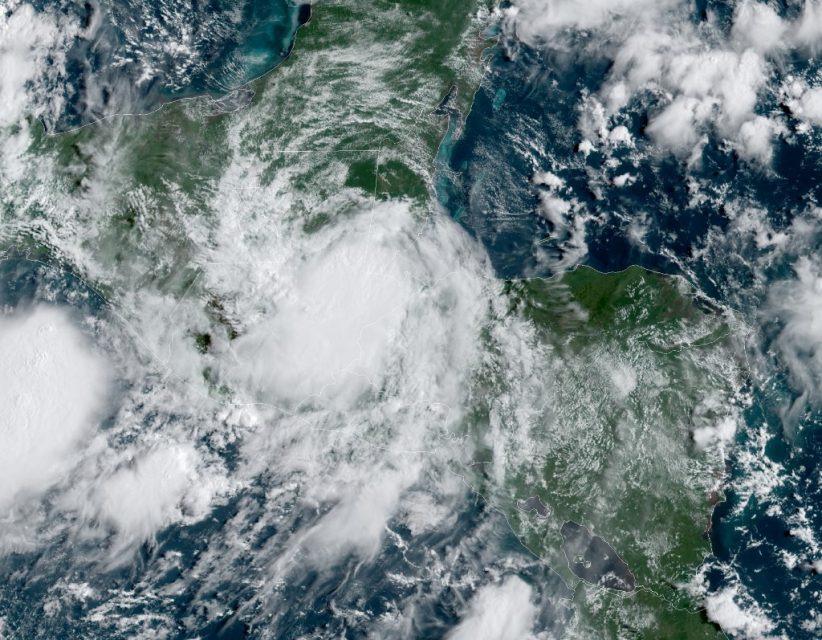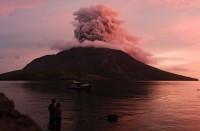
GUATEMALA CITY, Guatemala (AFP) — Nana was downgraded to a tropical storm on Thursday as it hit Guatemala, several hours after making landfall in Belize as a hurricane.
“Nana has weakened to a tropical depression, moving westwards,” said David de Leon, the spokesman for Guatemala’s Coordinator for Disaster Reduction (CONRED.)
De Leon said winds had reduced to a maximum of 55 kilometers per hour.
“Continued weakening is expected, and Nana is expected to degenerate to a remnant low pressure area on Friday,” said the US National Hurricane Center (NHC.)
However, it warned that the storm could produce up to eight inches of rainfall in Guatemala and Mexico.
“These rainfall amounts may produce life threatening flash floods and mudslides.”
CONRED reported trees falling and the collapse of a home in the northeastern town of Morales.
In Belize, the National Emergency Management Organization (NEMO) reported heavy rainfall and strong winds in Stann Creek district and other regions.
It said there had been electricity blackouts and warned that the storm “could also produce rainfall of 4-8 inches with isolated amounts of 10 inches over southern and central Belize which could lead to flash flooding and possible landslides.”
But the emergency organization urged people not to forget about containment measures to prevent the spread of the coronavirus pandemic, which it described as “the bigger threat.”
Precautionary measures
Soon after it was upgraded from a tropical storm to a hurricane, Nana made landfall between Dangriga and Placencia, towards the middle of Belize’s coastline, about 60 kilometers south of Belize City, just after midnight Belize time (0600 GMT).
It was traveling west at 25 kilometers (16 miles) per hour, with maximum sustained winds of 120 kph (75 mph), according to the NHC.
The strong wind and rains had already furiously shaken the Honduran tourist attraction of Islas de la Bahia, causing floods there and elsewhere in the country.
Civil protection organizations in Guatemala, El Salvador and parts of Honduras initiated precautionary measures as the storm threatened to cause severe damage.
The Permanent Contingency Commission of Honduras (COPECO), which had declared a “green alert” in seven of the 18 departments of the country, extended the list to 11 regions on Wednesday afternoon, including Francisco Morazan, where the capital Tegucigalpa is located.
The 2020 hurricane season, which runs from June to November, has been more active than average, with meteorologists forecasting between 19 and 25 tropical storms, of which seven to 11 will turn into hurricanes.
In typical years, only a couple of named storms would have formed by August, with an average season producing a total of 12 named storms.
© Agence France-Presse







